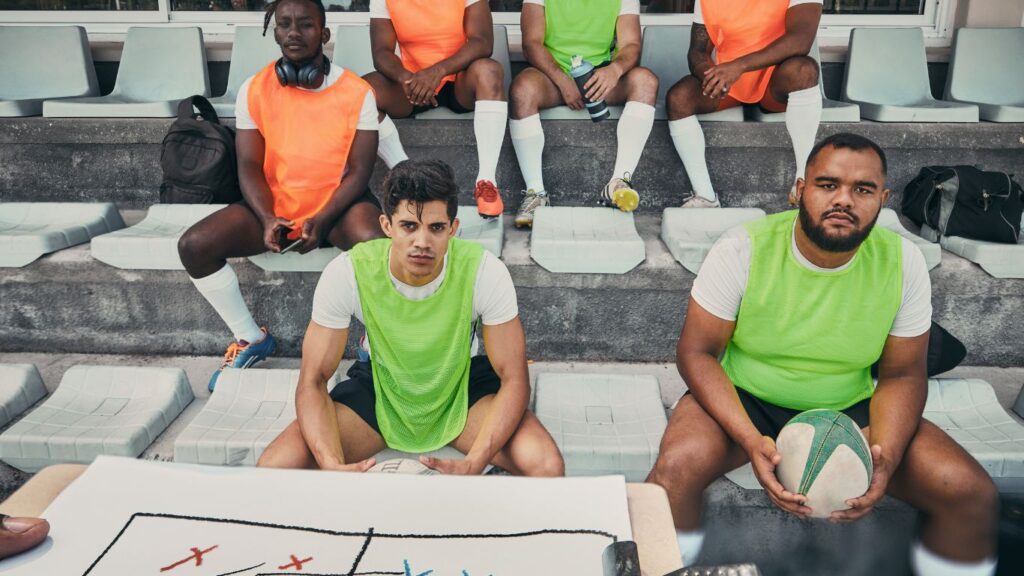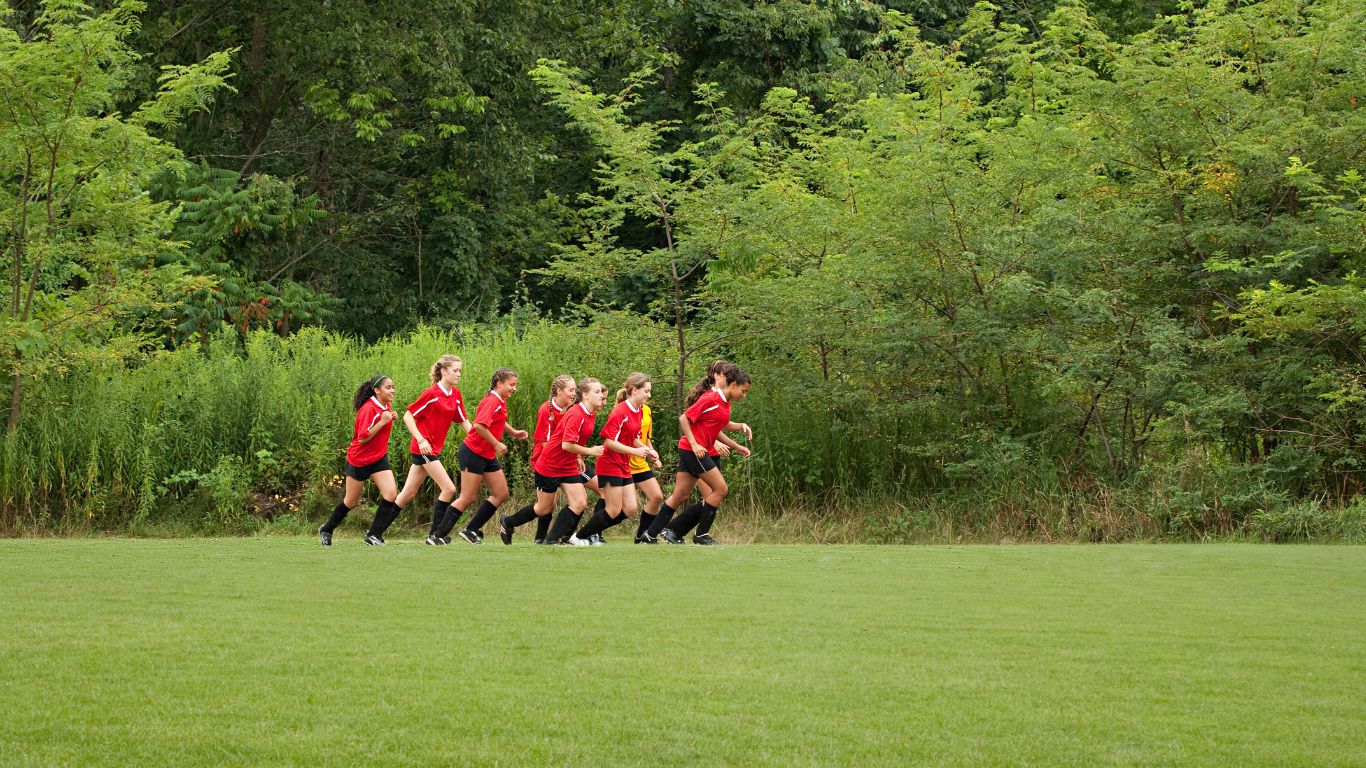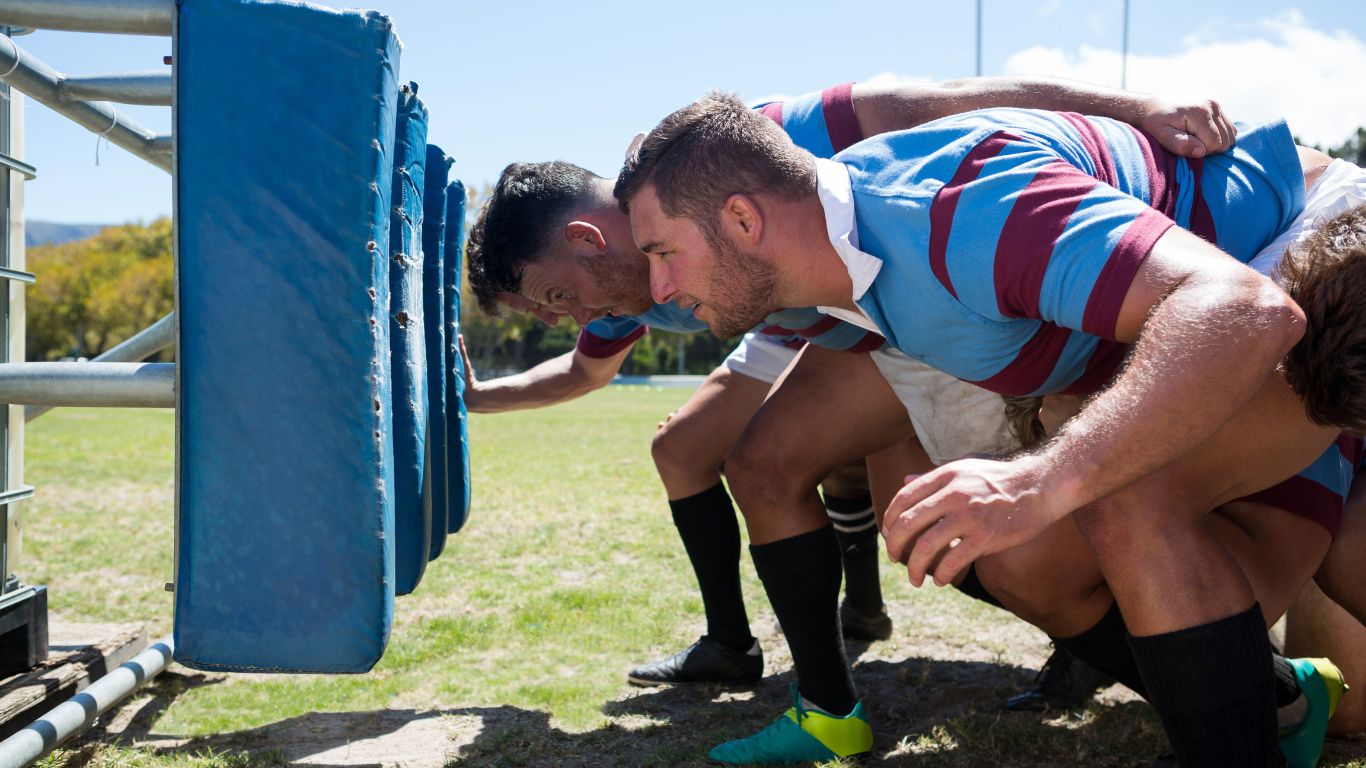College sports fans are likely familiar with terms like powerhouses, upsets, and championships. However, a new phrase has been buzzing around college athletics – “NIL,” which stands for Name, Image, and Likeness. Recently, the NCAA has garnered attention and sparked debates among sports enthusiasts, officials, and athletes, announcing that student-athletes can now profit from their name, image, and likeness. This seismic shift in the college sports landscape opens up many opportunities for student-athletes but also raises several questions about the potential consequences and implications, both positive and negative, for the players, institutions, and the future of college athletics as a whole.
For years, the debate surrounding student-athletes receiving compensation has divided opinions. The NCAA has upheld the principle of amateurism, arguing that athletes should only receive scholarships and not profit financially from their athletic prowess. However, with the changing landscape of college sports, some believe that the time has come for a new system. Legalizing NIL payments allows student-athletes to monetize their brand by signing endorsement deals, getting paid for autograph signings, or even using social media platforms for sponsored content. While this opens doors to earning potential and financial stability for college athletes, it also raises concerns about the potential inequalities that may arise, the impact on the integrity of college sports, and the potential imbalance between high-profile programs and smaller institutions. As we dive deeper into this ever-evolving discussion on NIL in college sports, we must analyze the implications and understand the various perspectives to grasp the complete picture of what’s at stake.

Credit amazon.com
Overview of the NIL (Name, Image, Likeness) concept in college sports
In the ever-evolving landscape of college sports, a new concept has emerged that is causing quite a stir: NIL, which stands for Name, Image, and Likeness. This revolutionary concept has gained significant attention and will bring about a transformative change in collegiate athletics. In this section, we will dive into the ins and outs of the NIL concept, exploring what it entails and how it will impact college sports as we know them.
The NIL concept refers to college athletes’ rights to profit from their names, images, and likenesses. Traditionally, college athletes were prohibited from receiving compensation beyond scholarships and stipends, as the NCAA (National Collegiate Athletic Association) strictly enforced amateurism rules to maintain a level playing field. However, the rise of the NIL concept challenges this longstanding tradition.
With the implementation of the NIL concept, college athletes can now engage in various commercial ventures, including sponsorships, endorsements, and other opportunities that allow them to monetize their brand. Student-athletes can finally leverage their athletic successes and popularity to secure previously off-limits financial and professional benefits.
The significance of the NIL concept lies in the fact that it empowers college athletes and recognizes their right to control their brand value. The NIL concept levels the playing field regarding economic opportunities by enabling athletes to profit from their names, images, and likenesses. It allows athletes to capitalize on their hard work, dedication, and talent, often leading to increased representation and opportunities for athletes from underrepresented communities.
The introduction of the NIL concept also has the potential to reshape the dynamics between student-athletes and the institutions they represent. It allows athletes to build their brand and develop a distinct identity outside their college affiliation. This newfound freedom gives athletes more autonomy, forging a path to pursue entrepreneurial ventures and establish a solid foundation for their professional careers, both during and after their college athletic journey.
However, as with any significant change, the NIL concept also brings many challenges and considerations. One of the critical concerns pertains to the potential discrepancies in compensation among athletes and the impact on team dynamics and the overall integrity of college sports. These concerns have prompted discussions on the need for regulations and guidelines to ensure that the benefits of the NIL concept are distributed equitably and do not compromise the spirit of fair competition.
In response to these concerns, several states have already passed legislation addressing the NIL concept, while others are in the process of doing so. Additionally, the NCAA itself has introduced interim measures to allow athletes to monetize their NIL rights while working towards developing long-term policies that provide a standardized framework for all member institutions.
Overall, the NIL concept represents a significant departure from the traditional model of college athletics. Granting student-athletes the right to profit from their names, images, and likenesses opens up a realm of possibilities for athletes, bringing about new economic opportunities and reshaping the dynamics of the collegiate sports landscape. While challenges remain, implementing the NIL concept signifies a step towards acknowledging the value and rights of college athletes, fostering a more equitable and inclusive environment for all involved.

Credit amazon.com
How NIL allows college athletes to profit from their name, image, and likeness
In a groundbreaking move, college athletes in the United States can finally profit off their name, image, and likeness (NIL). This has been a controversial topic for years, with passionate debates on whether college athletes should be compensated for their contributions to the multi-billion dollar sports industry. Now, thanks to the introduction of NIL legislation, student-athletes can finally have the opportunity to earn money during their collegiate careers.
The Name, Image, and Likeness legislation, known as NIL, grants college athletes the right to monetize their brands. This means that student-athletes can now sign endorsement deals, appear in advertisements, sell autographs, and promote products on social media. Essentially, they have the freedom to profit from their talent and popularity, just like professional athletes.
One of the significant advantages of NIL is that it recognizes and values the unique talents and hard work of college athletes. These athletes dedicate countless hours to their respective sports while juggling demanding academic schedules. They generate immense revenue for their universities and bring in millions of fans. Allowing them to profit from their name, image, and likeness is a way to acknowledge their contributions and provide them with more equitable opportunities.
NIL also gives college athletes a valuable opportunity for personal and professional growth. Student-athletes can learn about business and develop essential entrepreneurial skills by engaging in endorsement deals and brand partnerships. They can build personal brands that extend beyond their college careers, creating opportunities for them to succeed in future endeavors. With NIL, student-athletes can turn their passion for sports into a stepping stone for their future.
Moreover, NIL opens a new avenue for college athletes to secure financial stability. Many of these athletes come from modest backgrounds, and their families often struggle to make ends meet. By allowing them to monetize their name, image, and likeness, their financial burdens can be eased, enabling them to focus on their studies and athletic performance. This newfound economic freedom can also alleviate the ethical concerns surrounding the under-the-table payments that some athletes received in the past.
While NIL provides numerous benefits for college athletes, it also raises concerns and challenges that must be addressed. There are worries about the impact on competitive balance and the potential exploitation of student-athletes by brands and agents. It is crucial to establish clear guidelines and regulations to protect athletes from unfair practices and maintain the integrity of college sports. Collaboration between universities, athletic associations, and lawmakers is necessary to create a fair and transparent environment where student-athletes can thrive.
The introduction of NIL legislation signifies a significant turning point in the landscape of college sports. It empowers student-athletes to have greater control over their careers and opportunities to benefit from their talents. While challenges remain, the potential for growth and self-empowerment brought about by NIL is immense. This initiative acknowledges college athletes’ dedication and hard work and paves the way for a more equitable sports industry.
As we witness college athletes exercise their newfound rights and seize opportunities, it becomes evident that NIL represents a much-needed change in collegiate athletics. The ability to profit from their name, image, and likeness is a giant leap forward toward a fairer and more inclusive sports landscape. By embracing this transformation, colleges and universities support their student-athletes and ensure the continuous development of a dynamic and vibrant collegiate sports community.
Key factors to consider when understanding NIL in college sports
The world of college sports has been abuzz with discussions surrounding the topic of NIL, or Name, Image, and Likeness. This new era marks a significant shift in collegiate athletics, allowing student-athletes to profit from their brands. However, understanding NIL’s critical factors is essential to navigating this complex realm.
First and foremost, it is crucial to comprehend the scope of NIL. With this new ruling, student-athletes can capitalize on various previously off-limits opportunities. They can endorse products, appear in advertisements, or even monetize their social media presence. This opens the door for significant financial gains and the ability to shape their brands while still in college.
One key factor to consider is the balance between school and sports. While the potential for lucrative opportunities is enticing, focusing on academics and athletic commitments is essential. Finding the proper equilibrium is paramount to ensure that student-athletes can benefit from NIL while not compromising their educational and athletic responsibilities. This delicate balance requires discipline and time management skills to ensure success on and off the field.
Another significant factor to contemplate is the impact of NIL on team dynamics. As student-athletes begin monetizing their brands, navigating potential conflicts within a team setting is essential. Collaboration and team unity will foster a healthy and supportive environment. Balancing individual interests with team goals is a delicate task that requires open communication and a shared vision.

Credit amazon.com
Furthermore, understanding the role of institutions and regulations within NIL is essential. While student-athletes can now profit from their brands, they must still adhere to specific guidelines and rules set forth by their schools and governing bodies. Student-athletes must familiarize themselves with these guidelines to avoid any violations that could jeopardize their eligibility or negatively affect their teams.
Additionally, the impact on recruiting and college sports must be considered. The introduction of NIL introduces an entirely new aspect to the recruitment process. Recruits will likely consider a school’s potential for personal brand growth and the opportunities available when making decisions. This shift in focus could affect the balance of power among college sports programs, redistributing talent and resources to universities that can offer more significant NIL potential.
Lastly, it is vital to acknowledge the societal implications of NIL. This ruling not only empowers student-athletes but also shines a light on the broader conversations surrounding the commercialization of sports. The newfound ability of student-athletes to profit from their brands raises questions about fair compensation and the amateurism model in college athletics. This shift could reshape longstanding traditions and norms, prompting discussions and debates about the future of college sports.
Understanding the critical factors associated with NIL is crucial when navigating the ever-evolving landscape of college sports. From managing academic commitments to fostering a supportive team environment, student-athletes must strike a balance that allows them to capitalize on new opportunities while prioritizing their education and athletic obligations. Familiarizing oneself with institutional guidelines, considering the impact on recruiting, and acknowledging the broader societal implications will help to navigate this new era and ensure a successful transition into the world of NIL.
Impact of NIL on college athletes, universities, and the sports industry
Introducing the Name, Image, and Likeness (NIL) legislation has sparked significant conversations and debates within college sports. This groundbreaking shift allows college athletes to profit from their name, image, and likeness. It highlights a monumental change to the traditional model that restricted athletes from capitalizing on their brand and popularity.
One of the most prominent impacts of NIL is its effect on college athletes. For years, these talented individuals have dedicated countless hours of their lives to training and competing in their respective sports, often without receiving any financial compensation. The new legislation allows them to leverage their brand and generate income through various avenues such as endorsement deals, social media promotions, and merchandise sales.
By allowing college athletes to profit from their NIL, the legislation empowers these young men and women to acquire previously unavailable financial security. This newfound income can help athletes support themselves during their college years and provide a means to pursue personal goals and invest in their futures. While critics argue that this might influence young athletes to prioritize financial gain over their education, proponents of NIL believe that this opens the door for athletes to discover a healthy balance between academics and athletics while gaining invaluable real-world experience and entrepreneurial skills.

Credit amazon.com
Universities have also felt a significant impact from the implementation of NIL. With athletes now able to seek endorsement deals and sponsorships, universities must adapt their approach to recruiting and managing student-athletes. Universities may need to invest in support systems and resources to educate and guide athletes on navigating endorsement deals, managing finances, and understanding the legal aspects of NIL. While this might pose a challenge for some institutions, it also presents an opportunity for universities to enhance their reputation and attract top-tier athletes who seek comprehensive support both on and off the field.
Furthermore, universities can benefit financially from the increased exposure and interest generated by their athletes’ endorsements and marketing activities. The popularity and marketability of specific sports programs and athletes can attract significant sponsorship opportunities, resulting in revenue streams that can support athletic departments and even facilitate funding for non-revenue sports. This financial boost can ultimately benefit athletes indirectly by providing improved training facilities, better medical resources, and enhanced academic support.
The sports industry, too, has been significantly impacted by the NIL legislation. Companies eagerly seek partnerships with talented college athletes, recognizing their immense influence among the younger demographic. From major corporations to local businesses, organizations of all sizes can now collaborate with college athletes to promote their products or services. This presents a unique marketing opportunity for both parties involved, as athletes can benefit from financial compensation and enhanced exposure. At the same time, companies can tap into a broader and more engaged consumer base.
Additionally, the sports industry will likely witness a surge in innovation and investment due to NIL. Startups and platforms specializing in connecting athletes with endorsement opportunities are emerging, providing a marketplace for athletes and businesses to connect and negotiate deals efficiently. Digital platforms and social media will play a crucial role in shaping this new landscape, allowing athletes to build their brand and engage with their audience on a deeper level.
In conclusion, the Name, Image, and Likeness legislation has profoundly impacted college athletes, universities, and the sports industry. It has provided college athletes a newfound sense of empowerment, allowing them to monetize their brand and secure their financial future. Universities are now faced with the challenge of adapting their strategies to
Potential challenges and controversies surrounding NIL implementation in college sports
Implementing Name, Image, and Likeness (NIL) rights for college athletes has undeniably brought about a significant shift in the college sports landscape. While this change has generally been met with enthusiasm and support, it has its fair share of challenges and controversies. As colleges and athletes navigate this new era, several potential issues require careful consideration and resolution.
One of the primary concerns revolves around potential inequalities among college athletes. While NIL rights aim to allow every athlete to earn money and benefit from their brand, it is natural to believe that high-profile athletes from prominent programs may have a distinct advantage. These athletes may already possess more significant social media followings and attract lucrative endorsement deals, leaving less famous athletes at a disadvantage in potential earnings. As universities and governing bodies work to establish guidelines and regulations, there is a need for fairness and equality to ensure all athletes, regardless of their popularity, have access to NIL opportunities.
Another contentious issue is the impact of NIL on the amateur status of college sports. Historically, the amateurism model has been a fundamental principle of college athletics, distinguishing it from professional sports. The advent of NIL rights challenges this notion, as athletes can now earn commercial endorsements and sponsorships. Some critics argue that this shift blurs the line between amateur and professional, potentially compromising the essence of college sports and striking a balance between preserving the tradition of amateurism and embracing the opportunities that NIL brings, which poses a considerable challenge for universities and sports organizations.

Credit amazon.com
Furthermore, the potential influence of boosters and agents in NIL arrangements raises concerns about the fairness and integrity of college sports. With the freedom to engage in endorsement deals, athletes may become susceptible to manipulation and exploitation by unscrupulous actors seeking to profit from their talent. The influence of boosters and agents can directly impact recruiting, scholarships, and unfair advantages for specific programs. To prevent abuse and maintain the integrity of college sports, robust regulations and monitoring mechanisms must be implemented to ensure that athletes are not taken advantage of and that fair opportunities are available.
Related to the issue of monitoring, determining and enforcing appropriate restrictions on endorsements and sponsorships is another challenge. Without clear guidelines, there is potential for conflicts of interest and imbalances in the competitive landscape. For instance, athletes may be tempted to sign exclusive endorsement deals, impacting their availability for team-related events, media appearances, or even academic obligations. Striking the right balance between the athletes’ brand interests and the larger team and collective is crucial for college sports’ overall health and success.
Lastly, the impact of NIL on recruiting practices is yet another challenge to be addressed. The ability to monetize personal endorsements could attract athletes to specific programs with more lucrative opportunities, potentially leading to an uneven playing field. This concern is amplified in collegiate sports dominated by a small number of powerhouse programs that already hold significant influence. Efforts to prevent imbalances in recruiting must be taken to ensure fair competition and maintain the level playing field that college sports strive to achieve.
Though implementing NIL rights brings various challenges and controversies, it also presents an opportunity for positive change and progress in college sports. By addressing these potential issues, colleges and governing bodies can work towards an equitable system that protects the athletes’ interests and preserves the noble ideals of amateurism. Balancing individual rights with collective responsibility will be crucial in navigating these uncharted waters.
Conclusion
The introduction of the NIL (Name, Image, and Likeness) legislation in college sports has sparked widespread debate and excitement. This newly earned right for student-athletes allows them to monetize their name, image, and likeness, bringing about significant changes in collegiate athletics. By being able to sign endorsement deals, create and sell merchandise, or even start their businesses, these athletes now have a chance to earn a fair share of the profits generated by their talent and hard work. While the NIL policy does present potential challenges and concerns, such as fairness among different sports or players and the impact on amateurism, there is a consensus that this development represents a positive step towards providing student-athletes with more autonomy and opportunities. With the NIL era in full swing, it will be interesting to see how athletes, universities, and the sports industry adapt to this new landscape, ensuring a balance between fair compensation and the integrity of college sports.









